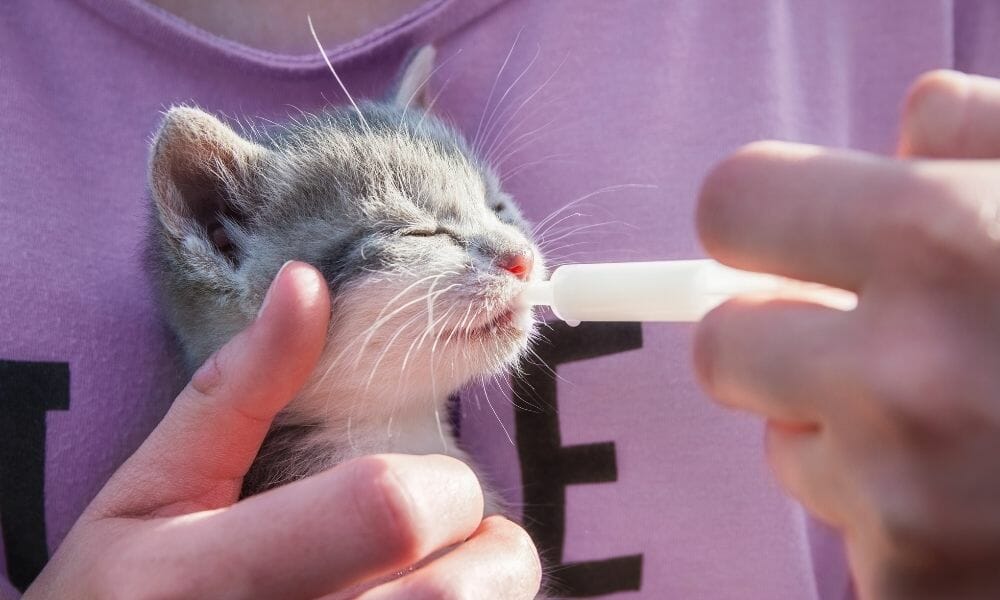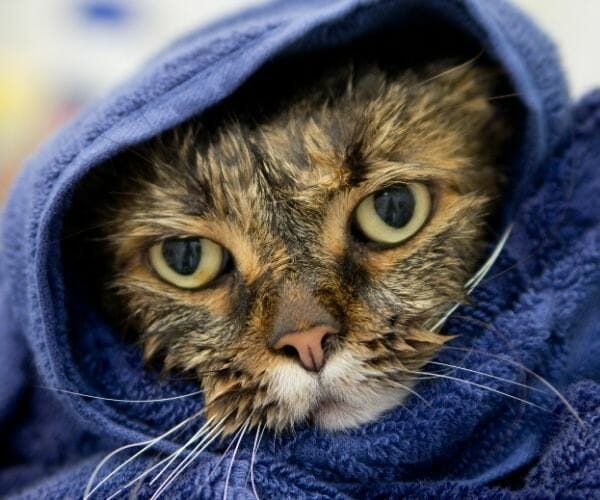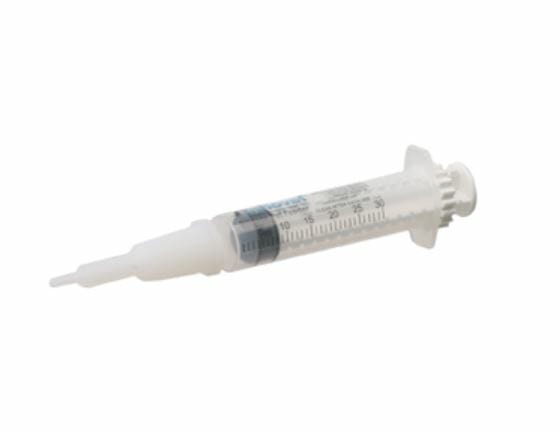Cats are usually private creatures and excel at hiding pain, illness, and discomfort, but when they lose their appetite, it’s a sign that something is wrong. If you notice that your cat has suddenly lost her desire to eat or is vomiting everything she eats, immediately take her to the veterinarian. Your vet may run tests and may also ask you to assist in feeding your cat until she gets better and resumes eating on her own.
In this Waldo’s Friends blog post, you’ll learn:
- When and why your cat needs assistance in eating/drinking
- What you need to syringe feed a cat
- How to syringe feed your cat
When and why your cat needs assistance in eating/drinking
There are many possible reasons why your cat isn’t eating. Some common reasons include illnesses such as gastrointestinal upset, urinary complications, upper respiratory infections, kidney disease, liver disease, and diabetes. Cats experiencing dental pain or recovering from injuries may also lose their appetite. Other times, stress, anxiety, and psychological reasons can trigger your cat’s appetite loss. Orphaned kittens also need milk, which can be fed to them through a nursing bottle or a syringe.
When your cat stops eating by herself, you’ll need to find ways to help her out—even if it means feeding her through a syringe. This involves pureeing your cat’s food, placing it in a syringe, and gently transferring it into her mouth. Assist feeding your cat will help her meet her daily nutritional needs, stay hydrated, and allow her to take her medicine with the least amount of effort.

What you need to syringe feed a cat
Here are the tools you need to assist feed your cat:
- Two to three feeding syringes
- Cat food (which can be pureed)
- Cloth and paper towels
Feeding syringes
It’s important to note that feeding syringes are not the same as regular syringes. Compared to regular syringes used for vaccines, feeding syringes have larger and longer endings. If you cannot find feeding syringes in your pharmacy, an alternative tool would be curved tip syringes. You can easily cut off their ends and use them like feeding syringes.
TIP: Load the food by either sucking it up via the syringe’s plunger or removing the back plunger and placing the food in the syringe with a small butter knife.
Cat food
Consult with your vet regarding the best food to serve your cat through a syringe. Based on your cat’s weight, you’ll need to figure out how many calories she needs to consume in a day. Aside from figuring out the number of calories, you need to break down the total into smaller feeding times depending on the number of times she eats in a day. Put a cap of 25 ml per meal.
Use a blender or food processor to puree your cat’s food, and add a bit of water (about 25% of the food). Strain it before placing the pureed cat food in syringes. Rather than serving it cold, warm the food to body temperature to make it more appealing for your cat.
FelineDM notes that some cats who are syringe fed “develop aversion to the food used in this process.” They advise cat parents not to use their cat’s favourite food during assist feeding.
TIP: Use Vet Calculators to determine your cat’s caloric requirement! An average cat needs approximately 200 to 250 calories daily.
Cloth and paper towels
Wrap your cat in a cloth towel (like a burrito!) to keep her secure throughout the feeding process. This way, you can control her movement and keep yourself protected from her claws. Plus, the liquid will go to the towel instead of on her fur. Paper towels can also help in cleaning up messes. If you have a baby bib at home, you can also place that around your cat’s neck to keep her clean.

TIP: Syringe feed your cat in the bathroom. The space is cosy, enclosed, and easy to clean.
How to syringe feed your cat
Now that you’ve prepared all the materials and figured out how much food to give your cat in one sitting, it’s time to feed her through a syringe. Do so by following these steps:
1 Prepare the filled syringes.
Warm the syringes by placing them in a mug filled with hot water for about 5 minutes. If you have limited syringes available, have the pureed food ready beside you in a bowl or cup.
2 Wrap your cat in a towel and make her comfortable.
Place the towel around her neck and drape it over her front paws. Use your non-dominant hand to keep her steady throughout the feeding.
3 Feed your cat slowly but surely.
With your dominant hand, position the syringe on the side or back corner of your cat’s mouth. Slowly push about 1 ml of food into her mouth until you both get the hang of it. Feed her slowly, and observe her reactions. Adjust the amount of puree you transfer into her mouth as needed. A feeding session may take 5 to 15 minutes depending on how receptive your cat is to the process.
Always remember…
Seek your vet’s advice about the kind of food you can puree for your cat and how much liquified food you can give in one sitting. Never force solids, liquids, or medication down the throat of an unconscious cat as well as one that has difficulty swallowing.
If your cat cannot hold down her food or has refused to eat for over 24 hours, seek help from her doctor immediately. The vet may perform physical checks, tests, X-rays, or ultrasounds to determine the cause of the problem.
Learn more about how to care for your cat by checking out the cat section of our blog! You can discover sneaky ways to make a cat love you, why cats knead, and why your cat licks your hair.

Leave a comment
Your email address will not be published. All fields are required.